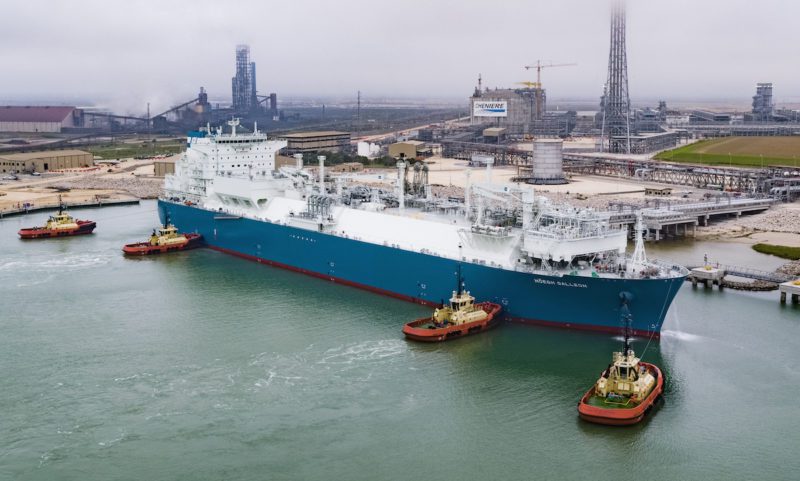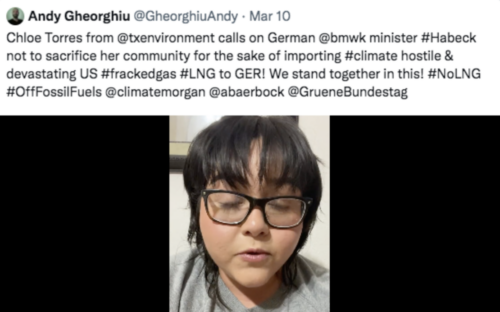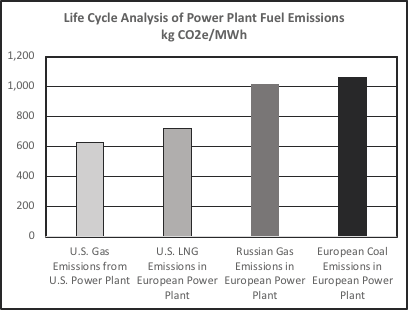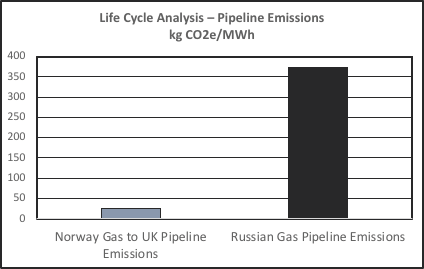
Federal and state governments have ignored disastrous impacts
Editor’s note: This is the final article in a four-part series revealing how the exportation of natural gas adversely affected Texans during Winter Storm Uri, how this situation could have been prevented, and what policy changes are needed to avoid a similar disaster in the future.
When you look at how LNG oversight has been ignored at both federal and state levels of government, it is easy to see why so much gas from the Gulf Coast was shipped during one of the worst emergencies in Texas history.
Lack of monitoring—Had real-time data about LNG exports been available to policy makers and the general public, problems that led to a shortage of gas supplies might have been detected early enough to make a difference in the emergency.
It is possible to get basic information about electric grids around the United States via the Internet in almost real time. Conversely, there is no virtual public dashboard that monitors the adequacy and movements of natural gas supply or storage.
Private companies track natural gas and sell the kind of information that regulatory agencies would need. But the state agencies that manage Texas energy—the Texas Railroad Commission, Texas Public Utility Commission, and the Electric Reliability Council of Texas (ERCOT)—do not subscribe to these data services.
Lack of regulation—Even if a dashboard monitoring system were available to these agencies, it would be of questionable value if governments could not use the information to regulate private companies in times of critical public safety or price emergencies.
The Federal Energy Regulatory Commission, which grants licenses to LNG facilities, has no legal authority to mandate where they send gas, even in dire situations such as Winter Storm Uri. Nor does the U.S. Department of Energy. Nor does the Texas Railroad Commission, regulator for the Texas gas industry. Nor does the Texas Public Utility Commission, regulator for the state’s electric utility industry, or ERCOT, the main Texas electric independent systems operator.
Legal protection missing—Texas consumer protection laws explicitly prohibit price gouging during times of emergency. Likewise in 38 other states and Washington, DC. However, I’m not aware of any State of Texas legal action pending against the companies that made more than $11 billion in excessive gas profits during Winter Storm Uri and, indirectly, contributed to excessive electric costs amounting to as much as $39 billion. In fact, Texas residential customers of natural gas utilities will pay about $60 more a year for a decade to absorb those costs.

The federal government has no explicit laws that prohibit the kind of price gouging experienced by gas and electric customers in Texas. In October 2021 U.S. Representative Joaquin Castro (D-San Antonio) introduced the Gas Consumer Emergency Market Protection Act (HR 5749). Representative Lloyd Doggett (D-Austin) was the sole original co-sponsor. If enacted the Act would mandate an investigation of the price gouging that took place during the Texas February freeze. The bill would also require drafting legal mechanisms to prohibit price gouging during emergencies from occurring in the future. Persons who violate this rule may be subject to a civil penalty of not more than $1 million per day. But even if the bill passes, it would do nothing to claw back the billions of dollars in tribute consumers will pay for the legal piracy that has already taken place.
Lack of legislation—After the severe pain and damage caused by the February 2021 disaster, the Texas Legislature held a series of hearings and passed new laws to protect the state energy system from another calamity. These laws required both the ERCOT electric system and the Texas gas supply system to achieve comprehensive reforms. However, no specific investigations and hearings were held regarding liquified natural gas (LNG) and no specific legislation was approved. LNG’s role in the disaster was rarely if ever mentioned.
Environmental concerns
Profound environmental implications will result from increasing the use of LNG. In addition to localized harms from gas extraction, the process of creating LNG creates hazardous air pollutants and, in many situations, also increases greenhouse emissions.
Site air pollution—As example of environmental concerns of air emissions from LNG processing, on March 10, 2021, Corpus Christi-based Chloe Torres, Coastal Bend Fossil Fuel Exports organizer for Texas Campaign for the Environment, aimed her Twitter message at Robert Habeck, German federal minister for Economic Affairs and Climate Action,
 Torres was alarmed that the Cheniere-Corpus Christi LNG plant, located close to where she lived, was applying for a permit to increase onsite air pollution from the plant’s flares. This would add to the already pollution-burdened nearby neighborhoods inhabited by lower-income and minority households.
Torres was alarmed that the Cheniere-Corpus Christi LNG plant, located close to where she lived, was applying for a permit to increase onsite air pollution from the plant’s flares. This would add to the already pollution-burdened nearby neighborhoods inhabited by lower-income and minority households.
As part of a collaboration with German environmental activists to stop a new LNG import facility in that country, Torres called on Habeck, “…not to sacrifice her community for the sake of importing climate hostile and devastating U.S. fracked-gas LNG to Germany.”
Activists in Port Arthur and the Rio Grande Valley who challenged permits for new LNG terminals in these areas have made similar arguments.
Greenhouse gas emissions—At the global level the most concerning issue is climate change. Using more natural gas will create more carbon emissions. The larger question is: compared to what?
Compared to renewable energy and energy efficiency measures that reduce electric demand, LNG has profoundly higher emissions. There is considerable debate, however, on whether LNG is better or worse than other carbon-based fuels. Various experts have created life-cycle analyses (LCAs) to account for the large amounts of energy in LNG processing and shipping vs. overland natural gas pipeline transportation vs. coal burning.

A review of various LCAs can be confusing because they use different assumptions. That said, in relation to fossil fuel consumed in Europe, some conclusions in these studies are commonly agreed upon.
All LCAs calculate that when used to produce electricity, LNG and pipeline natural gas have fewer emissions than coal per megawatt-hour. However, many power plants already use natural gas instead of coal. Further, natural gas is also used for direct heating in buildings and industrial plants.
All LCAs estimate that carbon emissions from processing of LNG are higher than using natural gas produced in the same country. One of the studies (National Energy Technology Laboratory 2019) estimated that over a period of 20 years the increased energy used for purification, extreme chilling, shipping across the Atlantic, and regasification of LNG exported to Europe can increase global warming emissions 14 percent compared to domestic use in the United States.
But opinions diverge when comparing LNG shipped to Europe to other gas alternatives.
Several LCAs estimate that LNG originating from the United States emits less carbon when shipped to European nations than Russian natural gas transported to Europe via pipeline. However, the carbon footprint of Russian gas is greatly increased by pipeline leaks from one of the longest pipelines in the world (about 3,000 miles).
So if gas is produced domestically within a European country, or relatively close to a country (e.g., Norway exports to the United Kingdom), then regional gas usually has a lower carbon footprint. Against the backdrop of European initiatives to reduce the continent’s reliance on Russian gas exports due to the invasion of Ukraine, a new, much shorter pipeline from Norway is now being completed, and new Norwegian offshore leases are expected to expand its gas production 9 percent by 2024.

Complicating analysis of LNG’s environmental impacts are two other permutations.
Green LNG—The combustion of natural gas is, by its nature, almost always going to emit carbon. While there is at least one demonstration plant for an electric generation technology that eliminates airborne carbon emissions by substituting pure oxygen for air in the combustion process—NET Power in La Porte, Texas—the technology is in its infancy. Today, all gas-fueled power plants, buildings, and industries emit carbon dioxide.
However, some LNG producers are discussing or implementing carbon reduction technology in the processing. Strategies include capture and underground sequestration of carbon dioxide from the gas purification process, and the use of renewable electricity instead of gas to run equipment.
Due to the need to comply with air quality standards, Freeport LNG has set up its plant to operate with electric instead of gas-driven motors for its refrigeration and compression system, which (theoretically) allows them to run on carbon-free renewable energy. However, since 60 percent of the electricity produced on the ERCOT system in 2021 was generated with fossil fuels, carbon-free electricity is still a distant dream right now.
Some LNG exporters also have begun providing fuel with carbon offsets–purchased carbon credits from investments in certified programs that reduce emissions, such as reforestation. Currently these shipments represent a tiny percentage of total volume. Some, if not all of these LNG shipments with offsets, only consider emissions from drilling and LNG processing, and not the shipment, regasification, or actual combustion of the fuel.
Green LNG insufficient—The second permutation is that even if green LNG becomes a reality–even if all drilling and processing emissions are completely eliminated–most environmentalists believe that the world’s global warming indicators are almost beyond salvation.
Carbon dioxide emissions are cumulative. Once in the atmosphere, they may affect the climate for more than a thousand years. If the goal is to prevent the worst ravages of the greenhouse effect, carbon hawks believe that a world with increasing use of natural gas will not solve the problem even if LNG is less polluting than coal, oil, or Russian gas.
The infrastructure for the size and scale of the LNG industry will ultimately cost hundreds of billions of dollars–even more if you include drilling and production of the gas to be liquified. Once this investment is made, owners of the infrastructure will heavily resist attempts to reduce the operation.
The law is a short blanket on a cold night
The problem with the term “free market” is that there is never a market you don’t have to pay for.
U.S. federal and state policy has been lax and, in some cases, non-existent when it comes to adapting to the exploding U.S. LNG export industry.
Federal laws for such things as siting and building LNG facilities are supposed to be followed. Standards concerning operational safety, and associated harm to workers and neighbors, are also in force.
But there is no federal or state oversight of domestic natural-gas prices or availability to domestic markets—not even in emergencies such as Winter Storm Uri.
Through neglect the poorly regulated and little understood U.S. LNG export industry—which is less than six years old—contributed to the largest energy-related catastrophe in Texas history. Yet the general public has little or no knowledge of it, and more importantly, no recourse if they did. Government agencies that might protect the public by devising new rules and pressing for new laws seem unaware of their obligations or exasperatingly slow in realizing them.
The government’s inattention and unpreparedness to the challenge of the LNG industry is very much as Robert Penn Warren bemoaned in his Pulitzer Prize-winning classic political drama, All the King’s Men: “The law is like a single-bed blanket on a double bed and three folks in the bed and a cold night. There ain’t ever enough blanket to cover the case, no matter how much pulling and hauling, and somebody is always going to nigh catch pneumonia.”
And the night is even colder when the heat is turned off.
 Trust indicators: Paul Robbins is an environmental activist and consumer advocate who has lived in Austin for five decades. He is editor of the Austin Environmental Directory, a sourcebook of environmental issues, products, services, and organizations in Central Texas. The publication has been offered free to the public since 1995, and can be accessed free online.
Trust indicators: Paul Robbins is an environmental activist and consumer advocate who has lived in Austin for five decades. He is editor of the Austin Environmental Directory, a sourcebook of environmental issues, products, services, and organizations in Central Texas. The publication has been offered free to the public since 1995, and can be accessed free online.
I hope you enjoyed this four-part series about liquefied natural gas and its impact on the brutal Texas freeze in February 2021. While the articles are free to the public, they took considerable time to craft. If you have the interest and ability to support this work, consider making an online contribution at: https://environmentaldirectory.info/.
Thanks to Tony Switzer and Sarah Campbell for reviewing this story, and Ken Martin for editing.





